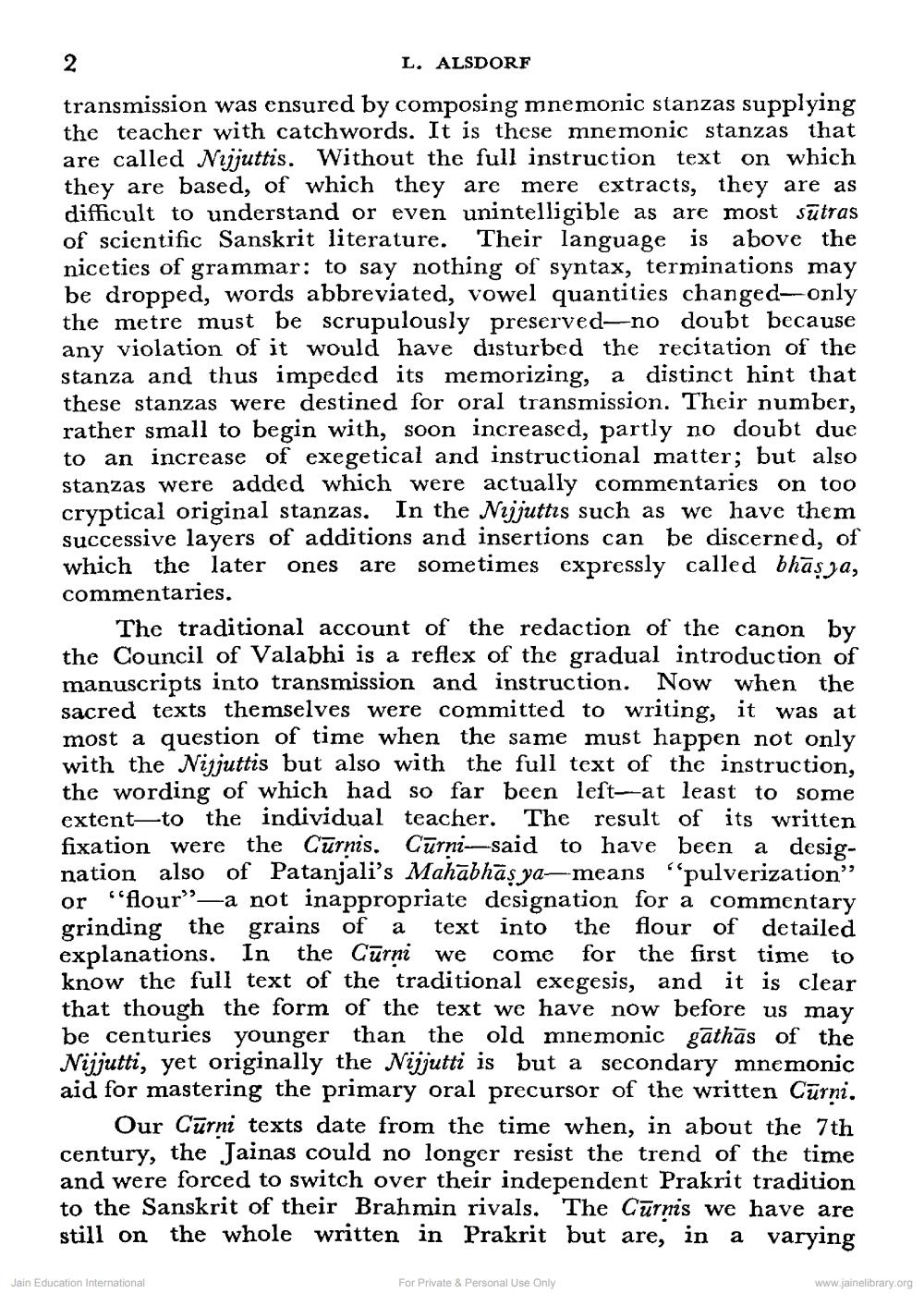Book Title: Mahavira and his Teaching Author(s): C C Shah, Rishabhdas Ranka, Dalsukh Malvania Publisher: Bhagwan Mahavir 2500th Nirvan Mahotsava Samiti View full book textPage 9
________________ 2 L. ALSDORF transmission was ensured by composing mnemonic stanzas supplying the teacher with catchwords. It is these mnemonic stanzas that are called Nijjuttis. Without the full instruction text on which they are based, of which they are mere extracts, they are as difficult to understand or even unintelligible as are most sūtras of scientific Sanskrit literature. Their language is above the niceties of grammar: to say nothing of syntax, terminations may be dropped, words abbreviated, vowel quantities changed-only the metre must be scrupulously preserved-no doubt because any violation of it would have disturbed the recitation of the stanza and thus impeded its memorizing, a distinct hint that these stanzas were destined for oral transmission. Their number, rather small to begin with, soon increased, partly no doubt due to an increase of exegetical and instructional matter; but also stanzas were added which were actually commentaries on too cryptical original stanzas. In the Nijjuttis such as we have them successive layers of additions and insertions can be discerned, of which the later ones are sometimes expressly called bhāṣja, commentaries. The traditional account of the redaction of the canon by the Council of Valabhi is a reflex of the gradual introduction of manuscripts into transmission and instruction. Now when the sacred texts themselves were committed to writing, it was at most a question of time when the same must happen not only with the Nijjuttis but also with the full text of the instruction, the wording of which had so far been left at least to some extent to the individual teacher. The result of its written fixation were the Curnis. Curni-said to have been a designation also of Patanjali's Mahābhāṣ ya—means "pulverization" or "flour"-a not inappropriate designation for a commentary grinding the grains of a text into the flour of detailed explanations. In the Curni we come for the first time to know the full text of the traditional exegesis, and it is clear that though the form of the text we have now before us may be centuries younger than the old mnemonic gathas of the Nijjutti, yet originally the Nijjutti is but a secondary mnemonic aid for mastering the primary oral precursor of the written Curni. Our Curni texts date from the time when, in about the 7th century, the Jainas could no longer resist the trend of the time and were forced to switch over their independent Prakrit tradition to the Sanskrit of their Brahmin rivals. The Curnis we have are still on the whole written in Prakrit but are, in a varying Jain Education International For Private Personal Use Only www.jainelibrary.orgPage Navigation
1 ... 7 8 9 10 11 12 13 14 15 16 17 18 19 20 21 22 23 24 25 26 27 28 29 30 31 32 33 34 35 36 37 38 39 40 41 42 43 44 45 46 47 48 49 50 51 52 53 54 55 56 57 58 59 60 61 62 63 64 65 66 67 68 69 70 71 72 73 74 75 76 77 78 79 80 81 82 83 84 85 86 87 88 89 90 91 92 ... 509
